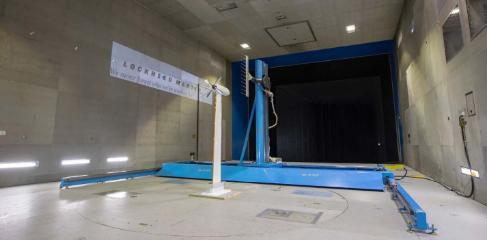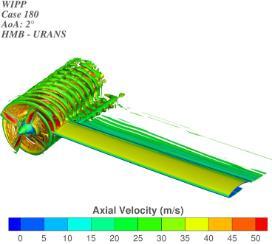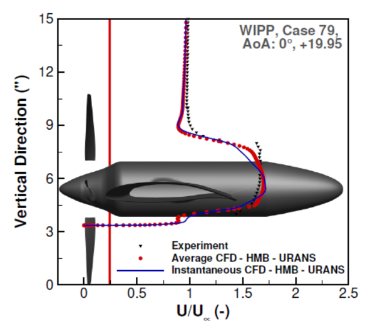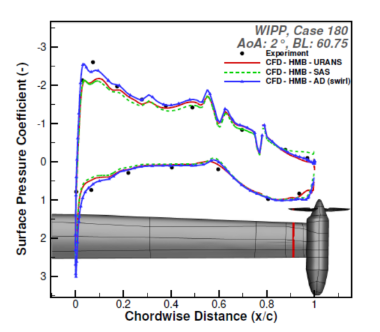Workshop for integrated propeller prediction (WIPP)
Using the tip-mounted propeller geometry from the WIPP project as the baseline of the numerical investigation of novel rotorcraft propulsion systems, the method used in the HMB3 solver was validated against experimental data from NASA.
  Fig. 1: The TMP was tested extensively at the Lockheed Martin Low-Speed Wind Tunnel (LSWT) using a scaled cruise-efficient wing designed for NASA X-57 and a C-130 propeller. (Left) Propeller wake profiles using iso-surfaces of Q-criteria with value 0.01 contoured using axial velocity. (Right)
Fig. 2: Wake profiles between experiments and CFD results. (Left) Surface pressure results between experiments and CFD. (Right) |
|
Contacts
G. Barakos (Professor), George.Barakos@glasgow.ac.uk
G. Qiao (Research Assistant), g.qiao.1@research.gla.ac.uk

UoG Contributions to the GARTEUR AG 26 Group
Glasgow University is contributing to the AG26 team mainly via numerical simulations of the different experimental setups put forward.



